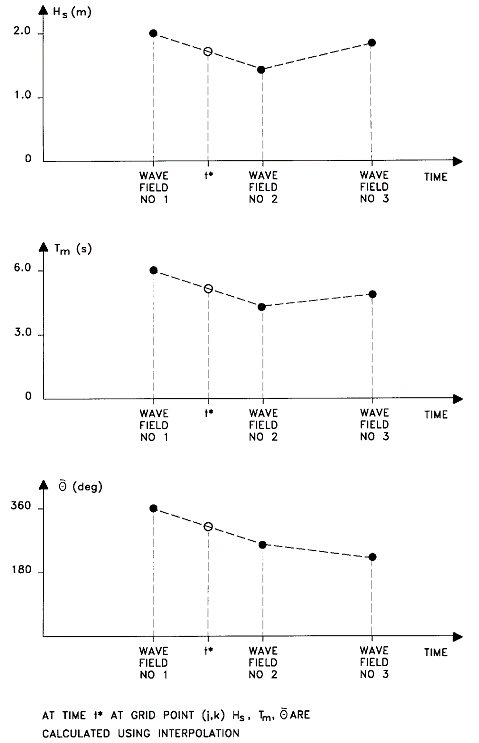
For the case of constant waves the waves will be sinusoidal with no directional spreading. You must specify the wave height, wave period and the angle to true north. These values will be set for the entire domain in all time steps of the simulation.
Varying in time, constant in domain
For this case you have to prepare a time series file (dfs0) that contains the wave properties. The values in the data file will be set for the entire domain for each time step in the simulation. If the time step in the file is not equal to that of the simulation, the program will interpolate (see Figure 6.19).
Constant in time, varying in domain
For this case you have to prepare a 2D unstructured data file (dfsu) or a 2D grid data file (dfs2) that contains the wave properties. The area in the data file must cover the model area. If a dfsu-file is used, a piecewice constant interpolation is used to map the data. If a dfs2-file is used, a bilinear interpolation is used to map the data. The first time step of the file will be used in all time steps of the simulation.
For this case you have to prepare a 2D unstructured data file (dfsu) or a 2D grid data file (dfs2) that contains the wave properties. The area in the data file must cover the model area. If a dfsu-file is used, a piecewice constant interpolation is used to map the data. If a dfs2-file is used, a bilinear interpolation is used to map the data. The program will interpolate if the time step is not equal to that of the simulation (see Figure 6.19).

Figure 6.19 Interpolation of wave fields in time